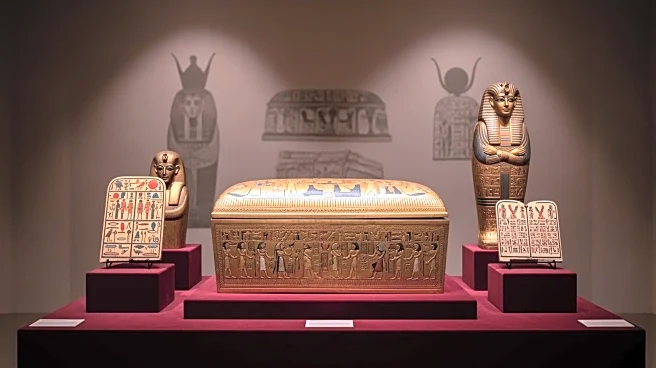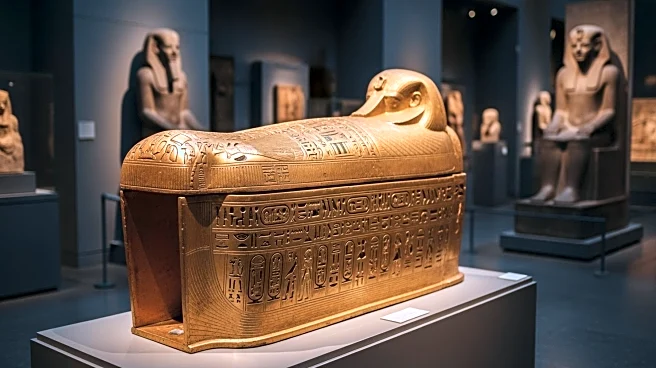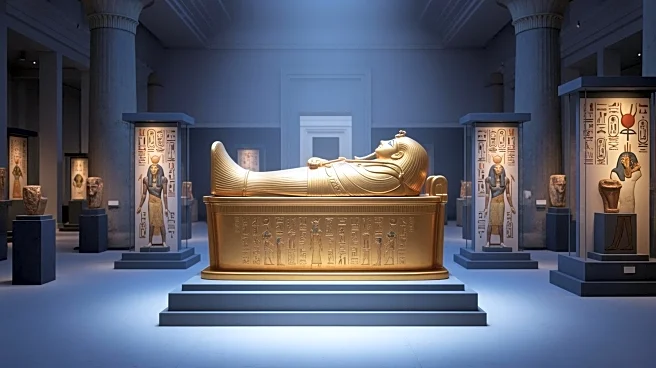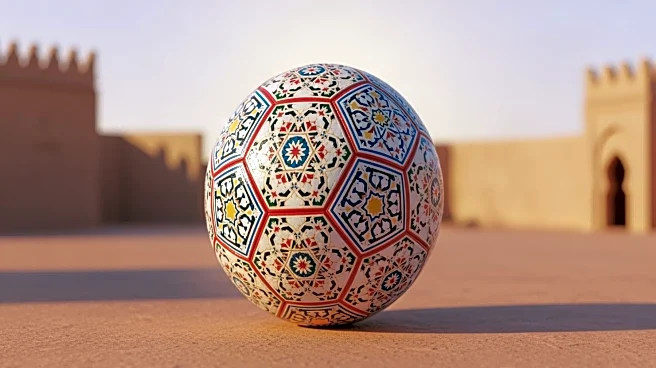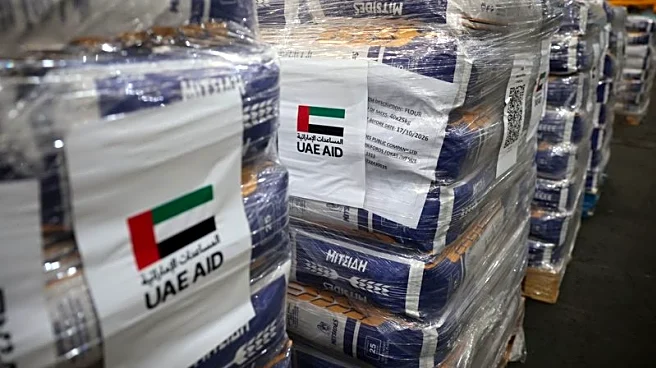What's Happening?
The United States has returned 36 stolen artifacts to Egypt, marking a significant recovery effort involving multiple U.S. institutions. The artifacts, which include rare manuscripts and ancient religious relics, were recovered through the collaborative
efforts of the Manhattan District Attorney's Antiquities Trafficking Unit, the New York State Attorney General, and the Metropolitan Museum of Art. These items, illegally taken from Egypt decades ago, are set to be restored and displayed at the Egyptian Museum in Cairo's Tahrir Square. The recovery was facilitated under a Memorandum of Understanding between Egypt and the United States, which aims to combat illegal antiquities trafficking. The Manhattan District Attorney's office played a crucial role, recovering 11 artifacts amid various criminal investigations, including those linked to the late antiquities dealer Robin Symes. The Metropolitan Museum of Art returned 24 rare manuscripts, while the New York State Attorney General recovered a 3,000-year-old painted plaster panel.
Why It's Important?
This recovery effort underscores the importance of international cooperation in preserving cultural heritage and combating illegal antiquities trafficking. The return of these artifacts not only restores significant historical items to their country of origin but also strengthens diplomatic ties between the United States and Egypt. The artifacts are not merely historical objects; they represent a rich cultural legacy and are vital to Egypt's national identity. The successful recovery and return of these items highlight the effectiveness of legal frameworks and international agreements in addressing cultural property crimes. This event may encourage other countries to pursue similar agreements and collaborations to recover their cultural heritage.
What's Next?
The returned artifacts will undergo restoration before being displayed at the Egyptian Museum in Cairo. This process will involve careful preservation efforts to ensure the artifacts are ready for public exhibition. The ongoing Memorandum of Understanding between Egypt and the United States will continue to facilitate the recovery of other stolen artifacts, potentially leading to further returns. The success of this operation may prompt other nations to seek similar agreements with the U.S. to recover their cultural properties. Additionally, the case may lead to increased scrutiny and regulation of the antiquities market to prevent future illegal trafficking.
Beyond the Headlines
The return of these artifacts raises broader questions about the ethics of artifact acquisition and the responsibilities of museums and collectors. It highlights the need for transparency and due diligence in the art and antiquities market. The case also brings attention to the historical injustices of cultural property theft and the ongoing efforts to rectify these wrongs. As more artifacts are returned to their countries of origin, there may be a shift in how cultural heritage is viewed and valued globally, emphasizing the importance of preserving cultural identity and history.
